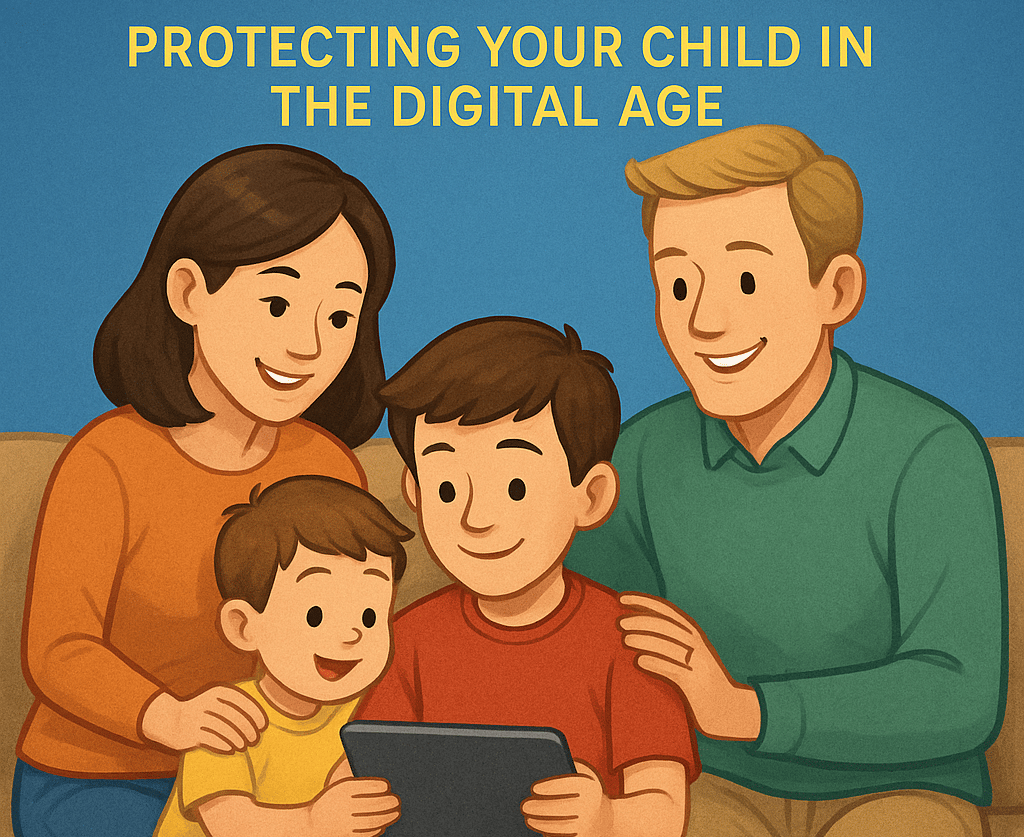Cybersecurity Timeline for Parents
Discover real digital risks kids face today and how to protect them confidently at every age. Get practical cybersecurity tips from our book, Cyber-Smart Parenting—a must-read for every parent.
Chad Rychlewski, Kae David
5/9/20252 min read


Welcome to Cyber-Smart Parenting!
In our first book, Cyber-Smart Parenting: Protecting Your Child in the Digital Age ( Buy on Amazon #ad), we dive into the real digital risks kids face today—and, more importantly, how you can confidently guide and protect them through it all. We break it down by age group, aligned with school stages, to make it easy to understand what your child needs at every step. Below, we’ll give you a fresh way to think about these stages and highlight some key things to consider. Want practical tips and deeper insights? Be sure to grab the book!
Cybersecurity Timeline for Parents
From Birth to Toddler (0–4 Years)
Limit Online Exposure – Avoid posting birth announcements with full names and birthdays. Be mindful of what family and friends share.
Secure Personal Data – Store your child’s Social Security number and medical information safely, avoiding unnecessary online entry.
Use Parental Controls – Set up strong privacy settings on smart devices and disable unnecessary data collection.
Preschool & Early Grade School (5–9 Years)
Be Selective About Apps & Devices – Choose educational tools with strict privacy policies and minimal data tracking.
Introduce Safe Browsing Habits – Set up kid-friendly search engines and block unsafe websites.
Limit Social Media Exposure – Avoid creating social media profiles for your child and educate relatives on privacy concerns.
Pre-Teen (10–12 Years)
Teach Cyber Hygiene – Explain password security, phishing scams, and the importance of not oversharing personal details.
Monitor Online Activity – Keep tabs on gaming interactions, app usage, and emerging social media interests.
Enable Two-Factor Authentication – Secure school accounts, gaming profiles, and email addresses with extra protection.
Teen Years (13–18 Years)
Set Social Media Boundaries – Establish rules around what can and cannot be shared online.
Discuss Online Predators & Cyberbullying – Teach kids how to recognize red flags, block/report threats, and talk openly about online interactions.
Review Privacy Settings Regularly – Ensure that social media, gaming, and other accounts are set to private.
Encourage Critical Thinking – Teach teens to question sources, identify misinformation, and understand how algorithms influence content.
Ongoing Practices for All Ages
Stay Updated on Digital Trends – Know the latest apps, social media platforms, and cybersecurity threats.
Communicate Regularly – Keep an open dialogue with your child about their online experiences.
Be Prepared for Cyber Threats – Have a plan in place for data breaches, cyberbullying incidents, and online scams.
This structured approach helps parents proactively protect their child's digital identity while fostering responsible online behavior.
Cybersecurity Parents LLC
Empowering families to navigate the digital world.
Email us
info@cybersecurityparents.com
© Cybersecurity Parents LLC 2025. All rights reserved.


All content, materials, and sessions provided by Cybersecurity Parents LLC are intended for informational and educational purposes only.
They do not constitute legal, financial, or cybersecurity advice. Parents, educators, and participants should use their own judgment and, when necessary, consult with a qualified professional. By participating in our events, reading our materials, or using our resources, you acknowledge and agree that Cybersecurity Parents LLC is not liable for any actions you take or outcomes resulting from the use or misuse of our content.
